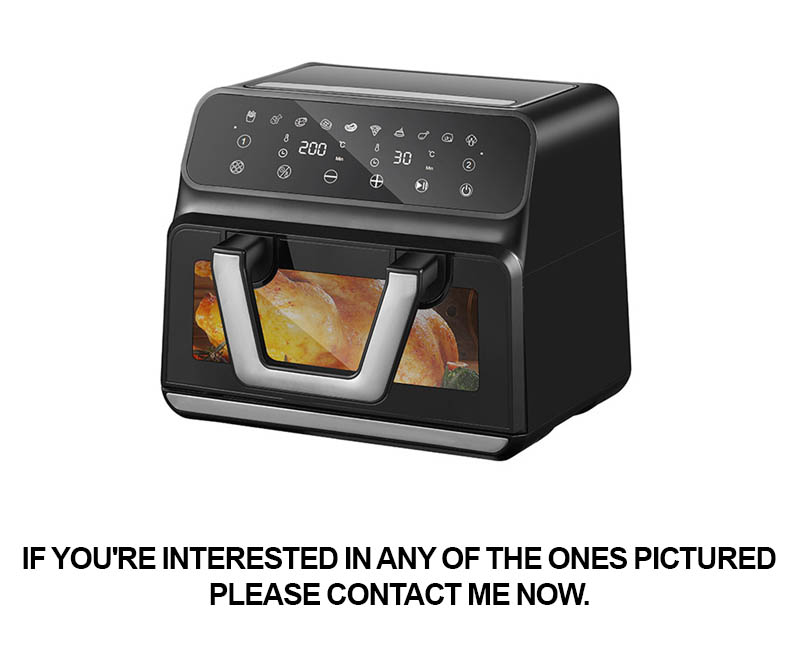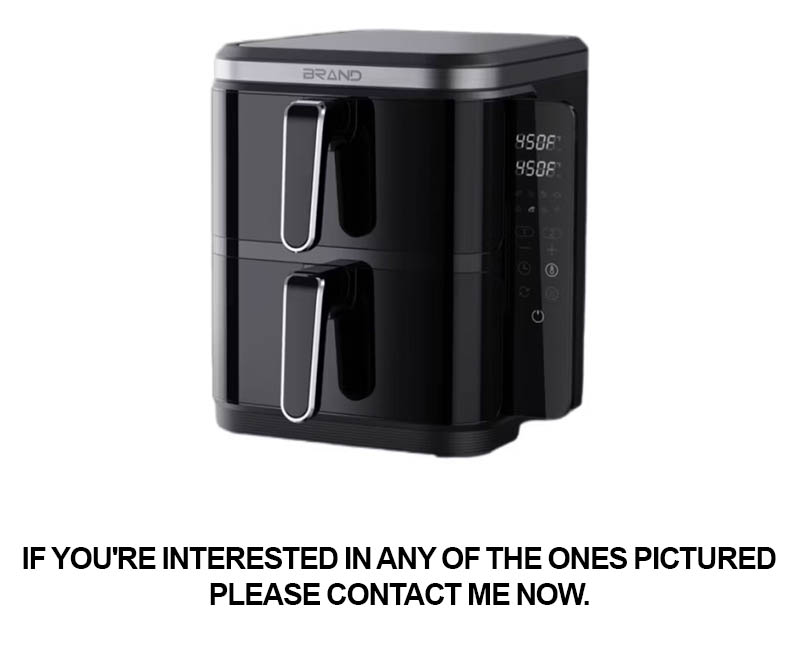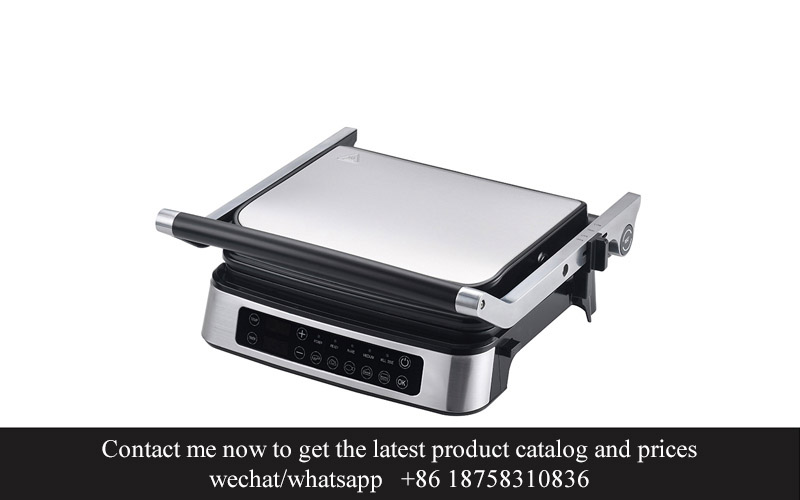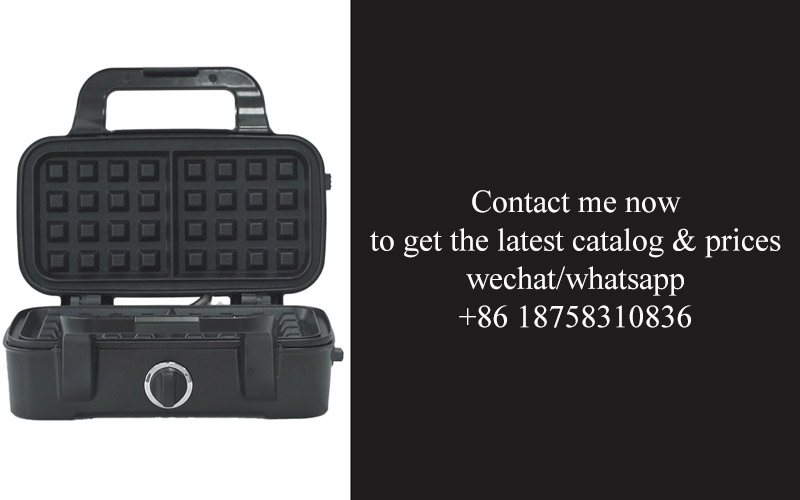Address
304 North Cardinal
St. Dorchester Center, MA 02124
Work Hours
Monday to Friday: 7AM - 7PM
Weekend: 10AM - 5PM
Address
304 North Cardinal
St. Dorchester Center, MA 02124
Work Hours
Monday to Friday: 7AM - 7PM
Weekend: 10AM - 5PM

In the ever-evolving landscape of kitchen appliances, innovation is not just a buzzword; it’s a driving force shaping the way we cook, clean, and entertain in our homes. As technology advances, so does the market, offering a plethora of options that cater to diverse needs and preferences. This article delves into the nuances of the kitchen appliance industry, exploring the latest trends, the role of data analytics, and the transformative impact of dropshipping platforms like Lazada and Shopee. We’ll also share insights on how to navigate the market, select the right suppliers and products, and look ahead to what the future holds for this dynamic sector.
The Rise of Kitchen Tech: A Trendy Turn in Home Appliances
In recent years, the kitchen has transformed from a mere functional space to a hub of innovation and style. The rise of kitchen tech has sparked a trendy turn in the home appliance industry, bringing a wave of sophisticated and smart gadgets that are not only practical but also a statement of modern taste. Let’s delve into the evolution and impact of this tech revolution in the heart of our homes.
Smart Cooking: The Art of Precision and Automation
Cooking, once a task that required constant attention and skill, has been revolutionized by smart appliances. Induction cooktops have replaced the traditional burners, offering precise temperature control that ensures food is cooked to perfection. Ovens with built-in sensors and pre-programmed settings have made roasting and baking a breeze, while sous-vide machines have allowed for the gentle cooking of delicate dishes without overcooking. These innovations have brought a level of culinary precision that was once reserved for professional kitchens.
The Internet of Things (IoT) in the Kitchen
The integration of IoT technology in kitchen appliances has turned the kitchen into a smart ecosystem. Smart refrigerators can now not only keep your groceries fresh but also alert you when you’re running low on milk or eggs. Smart ovens and ranges can be controlled remotely via smartphones, allowing for the convenience of starting dinner preparations even before you walk through the door. These interconnected devices have become an extension of the modern homeowner’s lifestyle, promising a seamless and efficient kitchen experience.
Design and Aesthetics: Aesthetic Integration
No longer is the kitchen appliance an afterthought in the design of a home. Modern kitchen tech is sleek, minimalist, and designed to complement the aesthetic of contemporary living spaces. From the matte black finish of premium refrigerators to the sleek lines of modern dishwashers, these appliances are not just tools but pieces of art. The emphasis on design has made kitchen appliances not just functional but also a decorative element that adds to the overall ambiance of the kitchen.
Health and Wellness: The Focus on Nutritional Cooking
The health and wellness trend has influenced the kitchen tech market significantly. There’s a growing demand for appliances that not only make cooking easier but also healthier. Pressure cookers and slow cookers, for example, have become popular for their ability to cook food at lower temperatures and pressures, retaining more nutrients. Air fryers have gained traction for their ability to cook with less oil, and high-tech juicers are now more advanced than ever, extracting the most nutrients from fruits and vegetables.
Energy Efficiency: A Greener Kitchen
As environmental concerns rise, so does the importance of energy efficiency in kitchen appliances. Manufacturers are increasingly focusing on creating products that are energy-saving and sustainable. Energy-efficient dishwashers, LED lighting in appliances, and programmable settings that minimize energy use are just a few examples of how the kitchen tech industry is responding to the need for eco-friendly solutions.
The Rise of Customization
Personalization is another trend shaping the kitchen tech market. Consumers are looking for appliances that can be customized to their specific needs and preferences. From customizable color options to appliances that can be connected to a variety of cooking apps, the industry is catering to a market that values individuality and uniqueness in their kitchen gear.
The Role of E-commerce Platforms
The growth of e-commerce platforms like Lazada and Shopee has been instrumental in the popularity of kitchen tech. These platforms provide a convenient and accessible marketplace for consumers to explore and purchase the latest gadgets. The ease of online shopping, coupled with competitive pricing and user-friendly interfaces, has made it easier for homeowners to embrace new technology without leaving their homes.
The Future of Kitchen Tech
The future of kitchen tech is bright, with ongoing innovations that promise to make our lives even more convenient and enjoyable. From voice-controlled appliances to AI-driven kitchen assistants, the next generation of kitchen technology is poised to bring about another revolution in the way we cook and live. The kitchen, once a place of necessity, is now a laboratory of innovation, and it’s exciting to think about what the next wave of kitchen tech will bring.

The kitchen, once a mere backdrop for cooking, has transformed into a hub of innovation and technology. The kitchen appliance industry has been at the forefront of this revolution, continually evolving to meet the changing demands of consumers. Let’s delve into some of the latest trends shaping this dynamic sector.
Modern consumers are no longer satisfied with the basic functionalities of kitchen appliances. They seek smart, integrated devices that not only simplify their lives but also offer a seamless blend of style and technology. One of the standout trends is the integration of AI and IoT (Internet of Things) in kitchen appliances.
Artificial Intelligence (AI) is making kitchen appliances smarter than ever before. From smart fridges that can track and manage inventory to ovens that can suggest recipes based on the ingredients you have, AI is personalizing the cooking experience. These appliances learn from your habits and preferences, making them more intuitive and user-friendly.
Internet of Things (IoT) technology is another game-changer. Appliances can now communicate with each other, creating a synchronized ecosystem that optimizes kitchen operations. For example, a smart oven can be programmed to preheat while your smart fridge reminds you to take out the ingredients for dinner. This interconnectedness not only saves time but also ensures energy efficiency.
Sustainability has become a crucial factor in the kitchen appliance industry. Consumers are increasingly looking for eco-friendly products that are energy-efficient and have a low carbon footprint. Manufacturers are responding by producing appliances with advanced energy-saving technologies, such as LED lighting and programmable timers.
Energy efficiency is not just about conservation; it’s also about performance. High-efficiency appliances like induction cooktops and dishwashers are becoming more popular as they offer better performance with less energy consumption. These innovations not only reduce utility bills but also contribute to a greener planet.
Health and wellness are at the heart of many of the latest kitchen appliance trends. There’s a growing demand for appliances that promote healthy eating habits and make cooking healthier meals easier. For instance, air fryers have surged in popularity as they provide a healthier alternative to deep-frying. Similarly, multi-functional blenders that offer smoothie settings or spiralizer attachments cater to the trend towards clean eating and meal prep.
Customization is another key trend. Consumers today want appliances that not only meet their functional needs but also reflect their personal style. From appliances with sleek, minimalist designs to those with bold, colorful aesthetics, the market is offering a wide array of options. Moreover, some brands are even allowing customers to customize their appliances with different finishes and features.
Smart connectivity is a must-have for many modern kitchens. Users are now able to control their appliances remotely through their smartphones or tablets, making it possible to start dinner while you’re still at work. This level of convenience and control is not just a luxury but a necessity in our fast-paced lives.
Innovation is also driving the development of new cooking techniques. sous-vide cooking, for example, is becoming more accessible with the introduction of affordable sous-vide appliances. These devices allow for precise temperature control, resulting in tender and flavorful dishes that would otherwise require professional culinary skills.
Safety features are also a hot topic in the kitchen appliance industry. As kitchens become more sophisticated, the need for safety has never been greater. New appliances come with features like child locks, anti-slip bases, and automatic shut-off mechanisms to prevent accidents.
Finally, the kitchen appliance industry is seeing a rise in the use of renewable materials. From recycled plastics to bamboo and stainless steel, sustainable materials are being used to create appliances that are not only functional but also environmentally responsible.
In summary, the kitchen appliance industry is witnessing a remarkable transformation driven by technological advancements, sustainability concerns, health consciousness, and a growing demand for customization and smart connectivity. These trends are shaping the future of how we cook, eat, and live, making the kitchen a more efficient, enjoyable, and sustainable space.

In the realm of modern kitchens, innovation isn’t just about convenience; it’s about sparking joy and transforming the heart of the home into a hub of creativity and efficiency. Here are some unique product ideas that are not just functional but also designed to bring a smile to the faces of homeowners and culinary enthusiasts alike.
Imagine a kitchen appliance that not only cooks your meals but also talks to you. A smart voice-controlled cooking assistant could guide users through recipes, adjust cooking times, and even suggest ingredients based on the user’s dietary preferences. With the ability to connect to other smart home devices, this could be the ultimate kitchen companion.
Gone are the days of flipping through countless recipes in a book or on a tablet. An interactive fridge with augmented reality (AR) technology allows users to visualize recipes on the fridge’s surface, complete with ingredient lists and cooking instructions. It could even suggest meal ideas based on the ingredients already in the fridge.
An oven that not only saves energy but also cleans itself? It’s not just a dream; it’s a reality. With self-cleaning capabilities and advanced insulation, these ovens would reduce the need for harsh chemicals and save homeowners both time and money. Plus, with smart features that can monitor cooking conditions and adjust the oven’s settings, the perfect meal is just a few commands away.
For coffee lovers, a personalized coffee maker that not only makes the perfect cup of coffee but also infuses it with essential oils for aroma therapy could be a game-changer. The machine could offer a variety of coffee strengths, temperatures, and even brewing times, tailored to the user’s preference.
This isn’t just a countertop; it’s a kitchen hub. Equipped with various attachments and smart features, it could be used for slicing, dicing, chopping, and even baking. The hub could also serve as a touch screen for recipes, a place to store fresh herbs, and a platform for interactive cooking tutorials.
In an era of growing environmental concerns, solar-powered kitchen appliances are a beacon of hope. From solar ovens to solar-powered refrigerators, these eco-friendly gadgets would not only reduce the carbon footprint but also save on electricity bills.
For those who are health-conscious, smart kitchen scales that provide nutritional analysis could be invaluable. These scales could not only weigh ingredients but also offer calorie counts, macronutrient breakdowns, and even suggest healthier alternatives to less nutritious ingredients.
An innovative waste management system that integrates into the kitchen could help reduce food waste and make recycling easier. This system could compost organic waste, convert non-recyclable materials into usable energy, and even alert users to when the bin needs emptying.
An appliance that combines the functionalities of a fridge, a smart scale, and a recipe app into one would revolutionize meal planning. This AI-powered kitchen appliance could suggest recipes based on the ingredients in the fridge, meal preferences, and even dietary restrictions.
Finally, a modular kitchen system that allows users to customize their appliances and storage solutions could be the ultimate expression of personal style and functionality. Users could mix and match different components to create a kitchen that fits their needs and aesthetic perfectly.
These innovative product ideas are just the tip of the iceberg when it comes to reimagining the modern kitchen. As technology continues to evolve, we can expect even more creative and joy-inducing solutions to make cooking not just a necessity but a delightful experience.

In today’s fast-paced world, data has become the backbone of every successful business, and the kitchen appliance market is no exception. Analytics play a pivotal role in shaping this dynamic industry, offering insights that can drive innovation, improve customer experiences, and ultimately, boost sales. Let’s delve into how data analytics is transforming the kitchen appliance market.
The Digital Footprint: A Treasure Trove of Consumer InsightsAnalytics allow companies to sift through vast amounts of data to understand consumer behavior. By analyzing purchase history, browsing patterns, and even social media interactions, appliance manufacturers can gain a comprehensive view of what customers are looking for in their kitchen gadgets. This digital footprint reveals trends that might otherwise go unnoticed, such as a surge in interest for eco-friendly appliances or a growing preference for smart kitchen technology.
Predictive Analytics: Anticipating Market ShiftsPredictive analytics takes the insights from past data and uses them to forecast future trends. In the kitchen appliance market, this means predicting the next big thing before it happens. For example, if data shows a rise in sales of sous-vide machines, manufacturers can anticipate a surge in demand for similar precision cooking appliances, allowing them to stay ahead of the competition by being the first to market with new products.
Personalization: Tailoring Appliances to Individual NeedsOne of the most significant impacts of data analytics on the kitchen appliance market is the ability to personalize products. By analyzing consumer data, companies can tailor their offerings to specific demographics, ensuring that the appliances on the shelves resonate with the target audience. This could mean creating a line of countertop ovens with unique features that cater to busy professionals or a range of eco-friendly dishwashers designed for environmentally conscious households.
Supply Chain Optimization: Reducing Costs and WasteAnalytics can also streamline the supply chain, leading to cost savings and reduced waste. By analyzing demand patterns, manufacturers can optimize production schedules and inventory levels, preventing overstocking or stockouts. This not only minimizes costs but also reduces the environmental impact of excessive waste. For example, a data-driven approach might reveal that certain models are more popular in certain regions, prompting manufacturers to adjust their distribution strategy accordingly.
Product Development: From Concept to MarketData analytics doesn’t just inform marketing and sales; it also drives product development. By analyzing customer feedback and market research, companies can identify gaps in the market and develop new products that address those needs. This might involve creating a line of appliances with user-friendly interfaces or integrating smart features that enhance the cooking experience. The data-driven approach ensures that the product development process is focused on creating value for the consumer.
Customer Experience: Enhancing Satisfaction and LoyaltyAnalytics can be used to monitor and improve customer satisfaction. By analyzing customer service interactions and feedback, companies can identify areas for improvement and make changes in real-time. For instance, if a particular model is consistently receiving negative reviews for durability issues, the company can take immediate action to address the problem, thereby enhancing customer loyalty and trust.
Market Segmentation: Targeting the Right AudienceMarket segmentation is a key component of successful marketing, and data analytics provides the tools to do it effectively. By segmenting the market based on demographics, psychographics, and behavior patterns, companies can create targeted marketing campaigns that resonate with specific customer groups. This approach ensures that marketing dollars are spent wisely, reaching the most likely buyers for each product.
Regulatory Compliance: Staying Ahead of the CurveThe kitchen appliance market is subject to a variety of regulations, from safety standards to environmental regulations. Data analytics can help companies stay compliant by monitoring changes in regulations and ensuring that their products meet all necessary requirements. This proactive approach can prevent costly legal issues and maintain the company’s reputation.
In conclusion, the power of data analytics in shaping the kitchen appliance market is undeniable. From understanding consumer needs to optimizing operations and driving innovation, data-driven insights are the key to navigating the complexities of this ever-evolving industry. As technology continues to advance, the role of analytics will only become more crucial, helping to create a brighter, more efficient, and customer-centric future for kitchen appliances.

In the ever-evolving landscape of kitchen appliances, understanding consumer needs in Europe and America is paramount for brands looking to make a splash. Here’s a glimpse into the nuances of consumer preferences that drive the market:
Smart Integration: Consumers in both regions are increasingly seeking appliances that can be seamlessly integrated into their smart homes. From refrigerators that sync with smartphones to ovens that can be controlled remotely, the demand for connectivity is on the rise. Users are looking for convenience and efficiency, and smart appliances are stepping up to the plate.
Energy Efficiency: As sustainability becomes a more pressing global concern, energy-efficient kitchen appliances are becoming a top priority. In Europe, where environmental regulations are stringent, and in America, where consumers are increasingly eco-conscious, appliances that promise lower energy consumption are attracting attention. Features like LED lighting and programmable settings are not just nice-to-have; they’re becoming must-haves.
Cooking Preferences: The culinary landscape in Europe and America is diverse, reflecting a range of cooking styles and preferences. For instance, the demand for induction cooktops in America is soaring, offering precise temperature control and faster cooking times. Meanwhile, in Europe, there’s a growing interest in multi-functional appliances that can cater to various cooking techniques, from slow cooking to sous-vide.
Design and Aesthetics: Aesthetics play a significant role in kitchen appliance purchases. Modern consumers are not just looking for functionality; they’re also seeking appliances that complement their kitchen’s style. Sleek designs, stainless steel finishes, and minimalist aesthetics are popular across both continents. The rise of smart kitchen islands with integrated appliances is a testament to the importance of design in the kitchen appliance market.
Health and Wellness: There’s a growing trend towards health and wellness, and this extends to kitchen appliances as well. In both Europe and America, consumers are interested in appliances that can help them prepare healthier meals. This includes everything from slow cookers that can tenderize tough cuts of meat to air fryers that allow for healthier frying alternatives.
Customization and Personalization: The kitchen appliance market is seeing a shift towards customization and personalization. Users want appliances that can be tailored to their specific needs and preferences. This could mean adjustable settings on ovens, programmable settings on microwaves, or even appliances that can be controlled through voice commands or personalized apps.
Brand Loyalty and Trust: In a crowded market, brand loyalty and trust are crucial. Consumers in Europe and America are more likely to invest in appliances from brands they know and trust. This is why many manufacturers are focusing on building strong brand identities and ensuring that their products meet the highest quality standards.
Marketing and Accessibility: The way consumers discover and purchase kitchen appliances is also changing. Online marketplaces, social media, and influencer partnerships are becoming key channels for reaching consumers. Moreover, the ease of online shopping and the availability of financing options are making high-quality appliances more accessible to a wider audience.
In conclusion, navigating the kitchen appliance market in Europe and America requires a keen understanding of the diverse needs and preferences of consumers. By focusing on smart integration, energy efficiency, cooking preferences, design, health and wellness, customization, brand loyalty, marketing strategies, and accessibility, manufacturers can create products that resonate with today’s consumers and stand out in a competitive market.

In the ever-evolving landscape of e-commerce, dropshipping has emerged as a game-changer for retailers, particularly in the kitchen appliance sector. Platforms like Lazada and Shopee have been at the forefront of this transformation, offering innovative solutions that cater to the dynamic needs of consumers. Let’s delve into how these platforms are revolutionizing kitchen appliance retail through the art of dropshipping.
The Concept of Dropshipping
Dropshipping is a retail fulfillment method where a store doesn’t keep the products it sells in stock. Instead, when a store sells a product, it purchases the item from a third party and has it shipped directly to the customer. This model eliminates the need for a large inventory and significant upfront investment, making it an attractive option for entrepreneurs and small businesses.
Lazada’s Strategic Approach
Lazada, one of Southeast Asia’s leading online marketplaces, has embraced dropshipping as a key component of its business model. By partnering with a vast network of suppliers, Lazada offers a diverse range of kitchen appliances that cater to different consumer preferences and budgets. The platform’s sophisticated algorithms ensure that products are readily available, reducing the risk of stockouts and enhancing customer satisfaction.
Shopee’s Dynamic Retail Strategy
Similarly, Shopee, another dominant player in the e-commerce space, has leveraged dropshipping to expand its kitchen appliance offerings. With a focus on speed and convenience, Shopee’s platform allows customers to find and purchase a wide array of kitchen gadgets with ease. The integration of live streaming and social commerce features has further blurred the lines between shopping and entertainment, making the experience more engaging for users.
Customization and Personalization
One of the standout features of dropshipping on Lazada and Shopee is the ability to offer customized and personalized kitchen appliances. Consumers can now select from a variety of colors, materials, and features to create a product that suits their unique tastes and needs. This level of personalization not only adds value to the product but also enhances the overall shopping experience.
Streamlined Logistics
The beauty of dropshipping lies in its streamlined logistics process. Both Lazada and Shopee have established robust systems that manage the inventory, packaging, and shipping of products. This ensures that customers receive their purchases quickly and efficiently, without the retailer having to handle the complexities of warehousing and distribution.
Market Trends and Consumer Insights
Lazada and Shopee have a wealth of data at their disposal, which they use to stay ahead of market trends and consumer needs. By analyzing purchasing patterns, customer reviews, and social media sentiment, these platforms can identify emerging trends and adapt their offerings accordingly. This data-driven approach has allowed them to introduce innovative kitchen appliances that resonate with consumers.
Building Trust and Credibility
In the world of online shopping, trust is paramount. Both Lazada and Shopee have worked tirelessly to build credibility by ensuring that their dropshipping partners adhere to strict quality standards. This commitment to quality has helped establish a reputation for reliability, making customers more likely to make repeat purchases.
Collaboration with Local Brands
Local brands have also benefited from the dropshipping model, as it allows them to reach a wider audience without the need for a physical store presence. By partnering with Lazada and Shopee, these brands can tap into the platforms’ extensive customer base and leverage their marketing expertise to grow their business.
Sustainability and Eco-Friendly Options
As environmental concerns continue to rise, both Lazada and Shopee have been proactive in promoting sustainable and eco-friendly kitchen appliances. By offering products that are energy-efficient and made from recycled materials, these platforms are not only meeting consumer demands but also contributing to a greener future.
Conclusion
The art of dropshipping has opened up new possibilities for kitchen appliance retail, thanks to platforms like Lazada and Shopee. By leveraging data analytics, personalized offerings, and efficient logistics, these platforms are revolutionizing the way consumers discover and purchase kitchen appliances. As the market continues to evolve, it’s clear that dropshipping will play a crucial role in shaping the future of online retail.

In the ever-evolving world of online retail, Lazada and Shopee have emerged as key players, offering entrepreneurs and small businesses a platform to tap into the vast market of kitchen appliances. The rise of top dropshipping suppliers on these platforms has been nothing short of transformative, allowing for a seamless and efficient way to bring innovative products to consumers. Let’s delve into who’s leading the charge.
The rise of dropshipping has been a game-changer for the kitchen appliance industry, especially on platforms like Lazada and Shopee. These suppliers have managed to carve out a niche by offering a diverse range of products that cater to different tastes and needs.
One such supplier is “KitchenGadgetsDirect,” known for its extensive collection of modern kitchen tools. They’ve mastered the art of curating items that not only meet but exceed customer expectations. From high-tech toasters to eco-friendly blenders, their offerings are a testament to the evolving demands of the market.
Another standout supplier is “SmartChefMarket,” which specializes in smart kitchen appliances. They’ve leveraged the power of technology to bring cutting-edge products like voice-controlled ovens and AI-powered kitchen assistants to the forefront. Their ability to stay ahead of the curve has made them a favorite among tech-savvy consumers.
Then there’s “EcoHomeAppliances,” a supplier that focuses on sustainable and energy-efficient kitchen gadgets. They’ve tapped into the growing trend of eco-conscious consumers by offering products that are both functional and environmentally friendly. Their commitment to sustainability has not only set them apart but has also resonated with a significant segment of the market.
Suppliers like “GlobalGourmetKitchen” have taken the art of international cuisine to new heights. They offer a wide array of appliances that cater to the needs of culinary enthusiasts, from high-quality coffee makers to specialized pasta makers. Their ability to source and deliver products from around the world has given them a competitive edge.
In the realm of small kitchen appliances, “MiniGadgetsWarehouse” has become a go-to destination. They offer a vast selection of compact and portable gadgets that are perfect for tiny kitchens or those looking to add a touch of convenience to their cooking routine. Their attention to detail in packaging and delivery has won over many customers.
When it comes to brand partnerships, “BrandApplianceDepot” has made a name for itself. They work closely with leading brands to offer authentic and high-quality kitchen appliances. Their credibility and the trust they’ve built with both brands and consumers have made them a top choice for dropshipping on Lazada and Shopee.
The rise of these top dropshipping suppliers on Lazada and Shopee is not just about offering products; it’s about understanding the market dynamics and adapting to the changing needs of consumers. They’ve managed to create a bridge between manufacturers and customers, ensuring that the latest innovations reach the hands of those who appreciate them.
For instance, “ModernKitchenSolutions” has recognized the importance of customer reviews and feedback. They actively engage with their customers to gather insights and use that information to improve their product offerings. This customer-centric approach has helped them build a loyal customer base.
Moreover, suppliers like “GlobalApplianceHut” have embraced the power of social media to connect with their audience. By showcasing their products through engaging content and live demonstrations, they’ve managed to create a buzz around their brand. This has not only increased their visibility but has also driven sales.
In the competitive landscape of Lazada and Shopee, these top dropshipping suppliers have found their unique selling points. Whether it’s through a focus on eco-friendly products, international cuisine, or cutting-edge technology, they’ve managed to stand out in a crowded market.
The success of these suppliers can be attributed to their ability to stay informed about the latest market trends. They constantly research and analyze consumer behavior, ensuring that their product offerings align with what customers are looking for. This strategic approach has allowed them to maintain a competitive edge and keep their customers satisfied.
In conclusion, the top dropshipping suppliers on Lazada and Shopee are not just businesses; they are innovators and trendsetters in the kitchen appliance industry. Their commitment to quality, customer satisfaction, and market adaptation has made them leaders in the field. As the market continues to evolve, these suppliers are poised to lead the charge, bringing the latest and greatest kitchen appliances to consumers worldwide.

Navigating the e-commerce landscape, dropshipping has emerged as a game-changer for retailers, especially in the kitchen appliance sector. Partnering with dropshipping suppliers offers a strategic advantage that can propel businesses forward. Here’s how:
Streamlined OperationsBy leveraging dropshipping suppliers, retailers can significantly reduce the complexities of inventory management. This means no more worrying about stock levels, storage costs, or the logistics of handling returns. The supplier takes care of these aspects, allowing retailers to focus on marketing and customer service.
Reduced Financial RiskOne of the most compelling benefits of dropshipping is the reduced financial risk. Since you don’t need to invest in inventory upfront, you’re not tied to a large capital investment. This means you can test the market with various products without the fear of being stuck with unsold stock.
Global ReachDropshipping suppliers often have a global presence, which means you can offer products to customers worldwide. This expands your market reach and can lead to increased sales, as you’re not limited to a local audience.
Flexibility and ScalabilityThe flexibility of dropshipping is unparalleled. You can easily add new products to your catalog without the need for additional inventory. This scalability is crucial for adapting to market trends and customer demands without the constraints of traditional retail models.
Enhanced Customer ExperienceWith dropshipping, you can offer a wider variety of products without the burden of managing them. This can lead to a more diverse and appealing product selection for your customers, potentially enhancing their shopping experience and loyalty.
Cost SavingsBeyond the financial risk reduction, dropshipping can also save on overhead costs. There’s no need for a physical store or a large warehouse, which means lower rent, utilities, and maintenance expenses.
Focus on Marketing and BrandingWhen you’re not bogged down by inventory and logistics, you can allocate more time and resources to marketing and branding efforts. This can help you build a stronger online presence and attract more customers.
Real-Time Inventory UpdatesMany dropshipping suppliers offer real-time inventory updates, ensuring that you always have the most accurate information about product availability. This can prevent overpromising and underdelivering, which is crucial for maintaining customer trust.
Customer Service OptimizationSince dropshipping suppliers handle the fulfillment, you can focus on providing exceptional customer service. This includes responding to inquiries, handling returns, and addressing any customer concerns, which can lead to higher customer satisfaction and repeat business.
Eco-Friendly ApproachDropshipping is inherently more eco-friendly than traditional retail. With no physical inventory, there’s less need for packaging and shipping materials, which can reduce your carbon footprint.
Competitive EdgeBy partnering with dropshipping suppliers, you can stay competitive in the market. You can quickly adapt to new trends and offer products that are in high demand, giving you an edge over competitors who may be slower to respond to market changes.
Long-Term Growth PotentialAs your business grows, you can scale up your operations without the need for a significant capital investment. This long-term growth potential is a strategic advantage that can help you establish a strong foundation for future success.
In conclusion, the benefits of partnering with dropshipping suppliers are multifaceted. From operational efficiencies to financial savings and customer experience enhancements, this strategic approach can provide a solid foundation for success in the kitchen appliance retail market.

In the world of kitchen appliance dropshipping, the journey from concept to customer is a meticulously crafted process that involves a complex supply chain. This chain is the backbone of the dropshipping model, ensuring that innovative products reach eager consumers efficiently and effectively.
The Conceptualization PhaseDesigners and engineers are the maestros behind the initial stages of product development. They brainstorm ideas, sketch prototypes, and refine concepts, often iterating on multiple versions to perfect the design. The focus is on creating appliances that not only meet functional needs but also resonate with the aesthetic sensibilities of modern consumers.
Sourcing Raw MaterialsOnce the design is finalized, the sourcing of raw materials begins. This phase involves identifying suppliers who can provide high-quality components without compromising on cost. The selection of materials is crucial, as it directly impacts the durability and performance of the final product.
Manufacturing and Quality ControlThe manufacturing process is where the concept transforms into a tangible product. Factories and manufacturers are chosen based on their ability to produce goods in line with international quality standards. Quality control measures are implemented at every stage to ensure that each appliance meets the specified criteria.
Warehouse and Inventory ManagementOnce the appliances are manufactured, they are transported to a centralized warehouse. Here, inventory management systems are put in place to track stock levels, manage orders, and prepare products for dispatch. Efficient inventory control is key to maintaining a smooth flow of goods and avoiding stockouts.
Order Processing and FulfillmentWhen an order is placed through a dropshipping platform like Lazada or Shopee, the process is triggered. The order is processed, and the necessary information is sent to the warehouse. Employees there pick the items, pack them securely, and prepare them for shipping. This process is streamlined to ensure quick turnaround times.
Logistics and ShippingThe logistics aspect of the supply chain is critical. Reliable shipping partners are chosen to ensure that products are delivered to customers in a timely and cost-effective manner. This includes managing various shipping options, such as standard, expedited, and international shipping, to cater to different customer needs.
Customer Service and After-Sales SupportThe supply chain doesn’t end with delivery. Customer service and after-sales support are integral parts of the process. This includes handling inquiries, resolving issues, and providing warranty services. A robust customer service system ensures that customers have a positive experience from start to finish.
Data Analysis and Continuous ImprovementThroughout the supply chain, data is collected and analyzed. This data helps in identifying trends, optimizing processes, and making informed decisions. Continuous improvement is a hallmark of successful supply chains, with companies always looking for ways to enhance efficiency and reduce costs.
The Importance of TechnologyTechnology plays a pivotal role in the supply chain. From inventory management software to customer relationship management systems, technology streamlines operations and improves accuracy. The use of mobile apps and cloud-based solutions allows for real-time tracking and management of the supply chain.
The Role of Dropshipping PlatformsLazada and Shopee, as leading e-commerce platforms, provide the infrastructure for dropshipping success. They handle customer payments, order processing, and logistics, allowing entrepreneurs to focus on marketing and customer engagement. These platforms also offer valuable insights into consumer behavior, which can be used to tailor product offerings.
The supply chain behind kitchen appliance dropshipping is a testament to the efficiency of modern logistics and e-commerce. It’s a complex network of people, processes, and technology that works together to bring innovative products from the drawing board to the customer’s kitchen. By understanding this chain, businesses can leverage its strengths to create a competitive edge in the market.

In the world of online retail, dropshipping has emerged as a game-changer, especially in the kitchen appliance sector. Here are some real-life examples of successful dropshipping ventures in this niche, showcasing the potential for profit and innovation.
An entrepreneur named Alex noticed a gap in the market for eco-friendly kitchen appliances. By leveraging dropshipping on platforms like Lazada and Shopee, Alex was able to offer a range of sustainable products without the need for a physical inventory. His unique selling point was the ability to provide customers with a wide selection of eco-friendly options, which quickly gained traction.
Sarah, a stay-at-home mom, turned her passion for culinary gadgets into a successful dropshipping business. She carefully curated a selection of high-quality kitchen tools and accessories, focusing on unique items that were not widely available. By building a strong social media presence and engaging with her audience, Sarah was able to create a loyal customer base that appreciated her personalized recommendations.
John, a tech enthusiast, saw an opportunity to combine the latest technology with kitchen appliances. He started his dropshipping business by focusing on smart kitchen gadgets that could connect to home automation systems. By staying up-to-date with the latest trends and offering cutting-edge products, John was able to attract tech-savvy consumers who were eager to integrate new technology into their homes.
Linda, a food blogger, leveraged her influence to launch a kitchen appliance dropshipping business. She carefully selected products that were both visually appealing and functional, catering to her followers’ needs. By offering exclusive deals and hosting giveaways, Linda was able to drive traffic to her online store and build a strong brand identity.
Mark, a seasoned e-commerce expert, recognized the potential for dropshipping in the kitchen appliance market. He partnered with a reputable supplier on Lazada and Shopee, focusing on high-demand items like air fryers and electric kettles. By optimizing his listings with compelling product descriptions and high-quality images, Mark was able to convert browsers into buyers at a high rate.
Emily, a health-conscious entrepreneur, saw a market trend towards healthier cooking methods. She started her dropshipping business by offering a variety of health-focused kitchen appliances, such as induction cooktops and air purifiers. By emphasizing the benefits of these products and sharing customer testimonials, Emily was able to attract health-conscious consumers looking for eco-friendly and efficient cooking solutions.
Tom, a passionate home chef, knew the importance of having the right kitchen tools. He founded a dropshipping business on Lazada and Shopee, focusing on professional-grade appliances that were both durable and user-friendly. By providing exceptional customer service and offering a satisfaction guarantee, Tom was able to build a reputation for reliability and quality.
These success stories highlight the diverse strategies and approaches that can lead to profitable kitchen appliance dropshipping ventures. From focusing on niche markets to leveraging social media influence, these entrepreneurs have shown that with the right products, marketing tactics, and supplier partnerships, anyone can tap into the lucrative world of dropshipping.

Navigating the supplier and product landscape can be daunting, especially for aspiring entrepreneurs. Here’s a guide to help you make informed decisions that can lead to a successful dropshipping venture:
Understanding Your MarketConsider the demand for kitchen appliances in your target market. Are there specific trends or gaps in the market that you can capitalize on? Look at the latest consumer reports and market research to identify what’s hot and what’s not.
Supplier SelectionChoose suppliers who specialize in kitchen appliances. Look for those with a strong online presence, positive customer reviews, and a track record of reliable delivery. Don’t hesitate to reach out to potential suppliers for samples or to discuss their product range and shipping policies.
Quality ControlAlways inspect the quality of the products before committing to a bulk order. High-quality items will not only satisfy customers but also help build a reputation for your brand. Ensure that the supplier adheres to quality standards and offers a return policy in case of defective products.
Pricing StrategyUnderstand the pricing structure of your supplier. It’s crucial to find a balance between competitive pricing and profitability. Consider the costs of shipping, handling, and any other fees involved in the dropshipping process to set your own prices effectively.
Product RangeA diverse product range can attract a wider customer base. Look for suppliers who offer a variety of kitchen appliances, from small appliances like blenders and toasters to larger items like ovens and refrigerators. This allows you to cater to different customer needs and preferences.
Communication and SupportEffective communication with your supplier is key. Ensure they are responsive to your inquiries and capable of handling any issues that may arise. A good supplier will be willing to work with you to resolve any problems and maintain a smooth supply chain.
Technology and IntegrationChoose suppliers who offer easy-to-use platforms for inventory management and order fulfillment. Integration with your e-commerce store can streamline the process, reducing the risk of errors and improving efficiency.
Customer ServiceAs an entrepreneur, you’ll be the first point of contact for your customers. Select products and suppliers that support your commitment to excellent customer service. This means reliable shipping, clear communication, and a willingness to assist with returns or exchanges.
Market ResearchKeep an eye on market trends and consumer behavior. Use social media, forums, and customer reviews to gather insights into what your target audience is looking for. This can help you anticipate demand and stay ahead of the competition.
Legal and ComplianceEnsure that your supplier complies with all legal requirements, including product safety standards and import/export regulations. This will protect your business and your customers.
Building a BrandYour brand is your identity in the market. Choose suppliers and products that align with your brand values and image. A cohesive brand experience can help you build customer loyalty and trust.
Feedback LoopEstablish a system for collecting customer feedback. This can provide valuable insights into what’s working and what’s not, allowing you to adjust your product offerings and supplier relationships accordingly.
Long-Term RelationshipsLook for suppliers who are interested in building long-term relationships. A strong partnership can lead to exclusive deals, better pricing, and improved service over time.
Remember, the right supplier and product choices can make or break your dropshipping business. Take the time to research and evaluate your options carefully, and don’t be afraid to pivot if something isn’t working out. With the right strategy, you can turn your passion for kitchen appliances into a profitable venture.

The kitchen, once a realm of simple appliances like ovens and blenders, is now a battleground for innovation and technology. As we look ahead, the future of kitchen appliances is poised to transform the way we cook, clean, and interact with our kitchen spaces. Here are some of the trends and advancements that are shaping the industry.
Smart Integration: Appliances that once stood alone are now becoming part of a larger ecosystem. Imagine a refrigerator that not only keeps your food cold but also syncs with your smartphone to provide nutritional information and meal suggestions. Smart ovens can adjust cooking times and temperatures based on the recipe you’re following, and smart dishwashers can optimize their cleaning cycles for different types of dishes.
Energy Efficiency: With climate change and rising energy costs, the next wave of kitchen appliances will focus on efficiency. We’re already seeing induction cooktops that use less energy than traditional gas burners, and dishwashers that only use water when necessary. The future will bring even more energy-saving features, not just for the environment but also for your utility bills.
Personalization: The kitchen of the future will cater to individual preferences and dietary needs. Customizable appliances will allow users to adjust settings based on their specific cooking habits or health requirements. For example, a smart oven could have a setting for gluten-free cooking, or a refrigerator could offer a range of temperature zones for different types of food preservation.
Health and Safety: Kitchen appliances are increasingly incorporating health and safety features. Sensors that detect gas leaks or fires, automatic shut-offs to prevent overcooking, and even appliances that can alert you if you’ve left the stove on are becoming more common. The future will likely see even more sophisticated safety systems, possibly including AI-driven monitoring to predict and prevent accidents before they happen.
Sustainability: Sustainability is not just a buzzword; it’s a driving force in the appliance industry. Manufacturers are looking for ways to reduce their environmental impact by using recycled materials, designing for longevity, and creating products that are easier to recycle at the end of their life. The kitchen of the future will be a reflection of a commitment to sustainability, from the materials used to the energy they consume.
Voice Control and AI: Voice assistants like Amazon’s Alexa and Google Assistant are already popular in many homes. The next step is integrating these voice-controlled systems into kitchen appliances. Imagine being able to turn on your coffee pot or start the oven with a simple voice command. The future will see a seamless integration of AI and voice technology, making kitchen tasks more intuitive and hands-free.
Interactive Cooking: The kitchen is no longer just a place to prepare meals; it’s becoming an interactive space. Appliances that can connect to your kitchen’s digital dashboard or even your home’s smart system will allow for more dynamic cooking experiences. You might have a recipe that changes based on the ingredients you have on hand, or a cooking machine that adjusts its process in real-time based on the food’s progress.
Accessibility: As the world becomes more aware of the need for accessibility, kitchen appliances will continue to evolve to cater to a broader range of users. Features like voice activation, touchless controls, and programmable settings will make appliances more user-friendly for those with physical disabilities or sensory impairments.
The kitchen of the future is not just about cooking; it’s about creating an environment that enhances our lives. From smart, efficient appliances to those that are sustainable and accessible, the industry is on the cusp of a revolution that will redefine what it means to be in the kitchen.